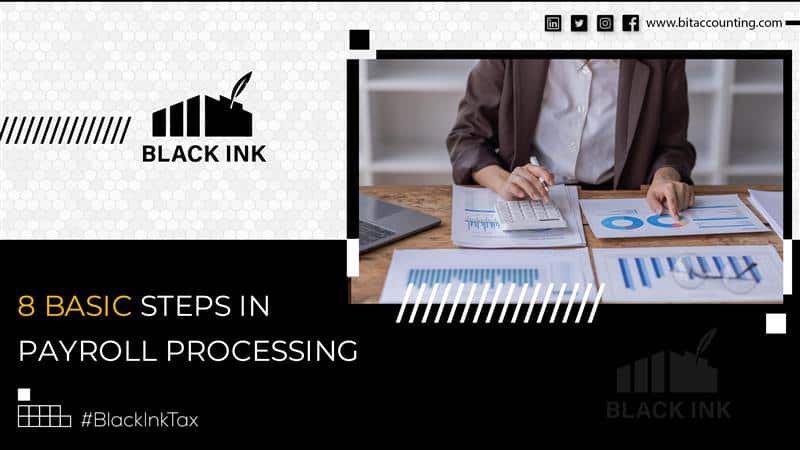
Table of Contents
8 Basic Steps in Payroll Processing
Payroll processing can be defined as the process involving management of employee payments be it salaries, compensations, etc. This process comprises all the elements that are behind the imbursement of an employee’s salaries. It comprises all the proceedings that a firm has with its employees regularly so that they are paid in a timely manner.
Essentially, there are three steps involved in the payroll process. Pre-payroll, post-payroll and actual payroll processing stage. All three of these stages are further broken down into other steps.
For ensuring success in the payroll process, a firm should incorporate all the required payroll processing system techniques that can facilitate their payroll specialists in their every day work. Preferably, there should be a lot of automation in the payroll process to enhance the efficiency of this task and avoid human-error as much as possible.
Pre-payroll
Pre-payroll affairs include all the tasks that should be fulfilled before the main payroll process can be initiated. This involves payroll management execution, registration with relevant authorities, and all the documentation that is mandatory for each payroll run.
Payroll Processing
This step is initiated after all the pre-payroll affairs are concluded. The time required to complete this part is dependent on whether a business uses a dedicated payroll software or any other way. This step involves:
- Calculating gross pay
- Calculating payroll taxes
- Finding out total pay
- Inspecting payroll outcomes for preciseness
- Disbursement of payment to employees from the designated payment method
Post-payroll
Providing the par order for the required salaries is an important aspect of the payroll process. Here are some of the duties included in the post-payroll:
- Providing payslips, done either electronically or by paper.
- Presenting and reporting payroll taxes that are withheld.
- Making payroll compliant processes by filing the required reports that require payroll data.
- Managing the payroll records.
Following is a step-by-step process to for performing a payroll
Finding a payroll system
There are three ways to accomplish this step:
- A manual payroll is all about achieving the payroll physically on a paper, particularly spreadsheet.
- This means that you hire a third party accounting firm like Black Ink for all the payroll related tasks like bookkeeping or payroll taxes.
- Payroll software incorporates every payroll function like payroll automation, time tracking, etc.
Formulating a payroll policy
For this you need to go through your labor laws, state laws and federal laws. For instance you should avoid a common FLSA violation that is unpaid overtime and it can happen without you being aware of it. You must also include important payroll aspects in your payroll policy like: pay dates, payment methods, payroll benefits, payroll deductions and withholdings.
Collecting employee data
It’s important to understand the financial information regarding each employee to make sure that you are paying them all the exact amount they are employed on. Additionally, this also includes the subtractions and withholdings. For guidance, you can check out the Form W-4.
Establish a direct deposit
A business owner has the ability to formulate a direct deposit instantly through the firm’s bank account or by a payroll service provider. Direct deposit is a trouble free way for both you and your employees. Direct deposit involves these things:
- Bank name
- Account type
- Bank routing number
- Account number

Set-up a time-tracking system
Now that everything is in place, it’s time to focus on tracking hours. FLSA has made it mandatory for all businesses and employers to keep a precise track of records for work hours of all nonexempt employees. Non-exempt employees are hourly employees. Here, a time-tracking software that keeps a track of employee working time can be used.
Gather employee timesheets
Now you need to import the timesheets in your payroll software. In this step, add the hours and find out any mistakes that can interpret the numbers upon your payroll records.
Authorize and confirm the payroll
Approval is an easy but important step when running payroll. In this step ensure that all the hours are included and are correct so that payroll generated is accurate.
Report and improve the payroll records
Now that the payroll has been generated. Try to update the payroll records. This can be done in compliance with all necessary taxes and deductions.
GET FREE QUOTE FOR ALL OF OUR SERVICES
Black Ink will send you a free analysis of your current state and what would be the cost of managing either a separate accounting and bookkeeping services or a complete solution across New York, USA. Do get in touch and we will be happy to consult you with our bookkeeping services in NY, New York, USA.
